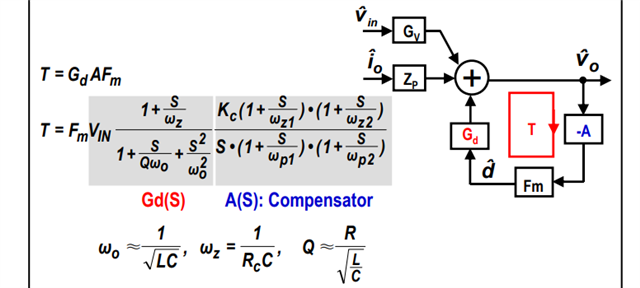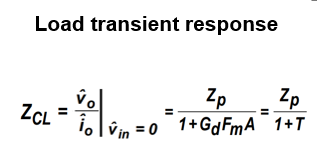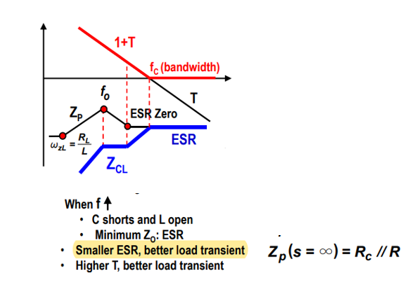Hi Team,
I'm studying about VM & VFF control mode currently. I have some questions as below:
1. Line transient response & Load transient response. Could u please kindly explain why the smaller GCL and smaller ZCL could cause faster load transient response? What factors influence line/load transient response? Could u please offer related documents if there are?
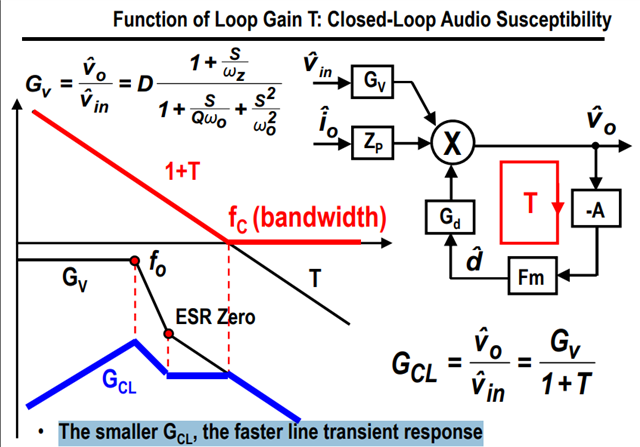
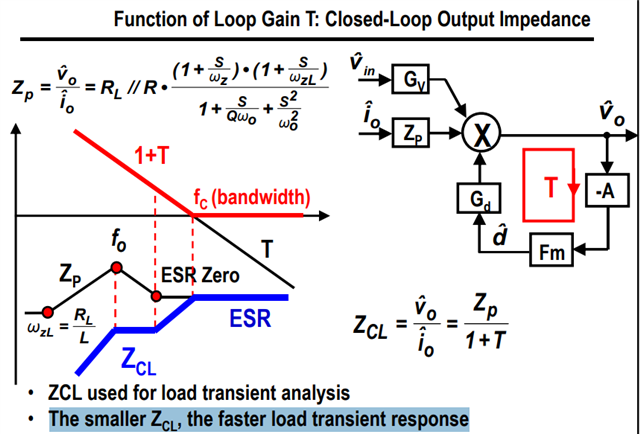
2. About VFF control mode, the ramp slope varies with Vin. How to understand this causes a faster line transient response than VM control mode? And how to get this equation Fm=1/(K*Vin), that's to say why (D/Vcomp)=1/(K*Vin)? Can we still prove it by similar trangles?
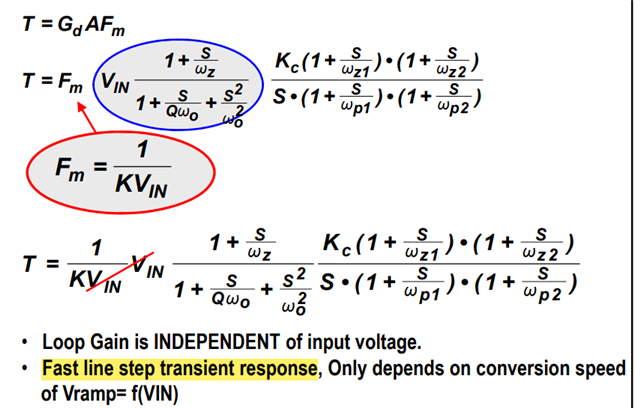
3. How to get this red 1+T bode plot in the question 1?I'm kinda confused. Could u please kindly explain how to get 1+T bode plot from T(Buck converter VM control mode control loop gain) bode plot?
Thanks a lot! Have a nice holiday!
Victoria



